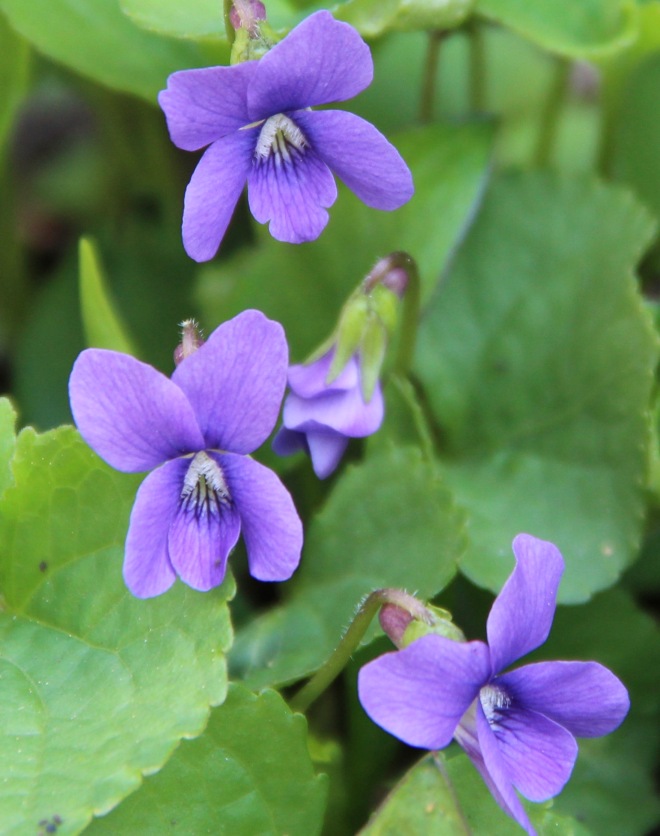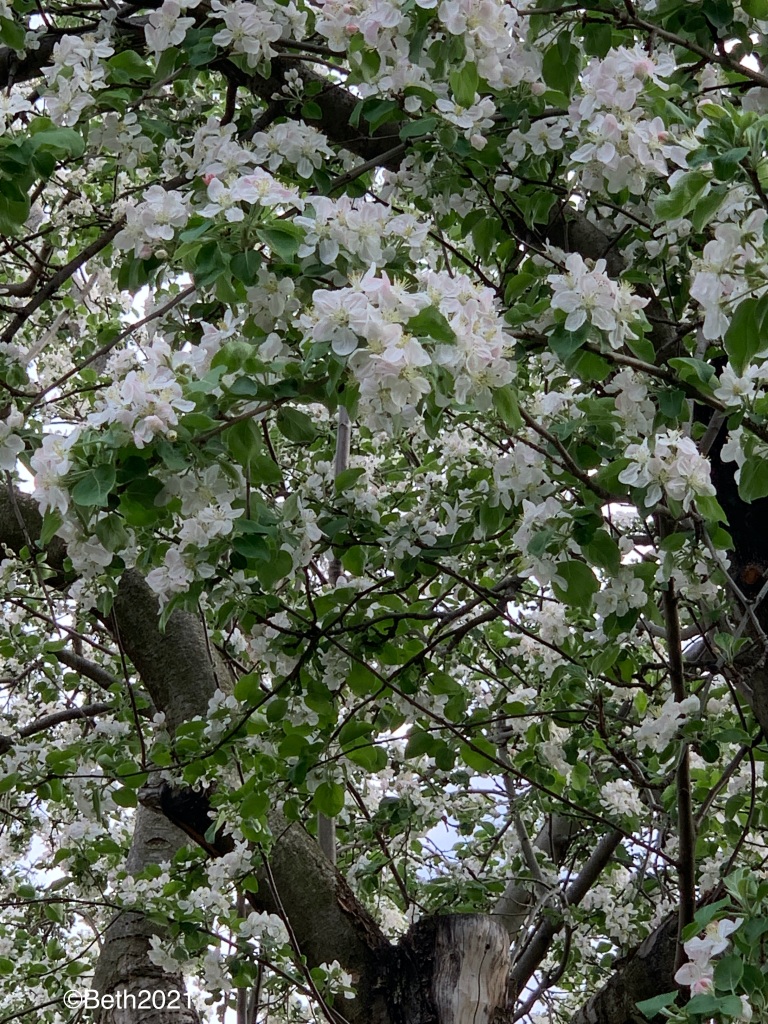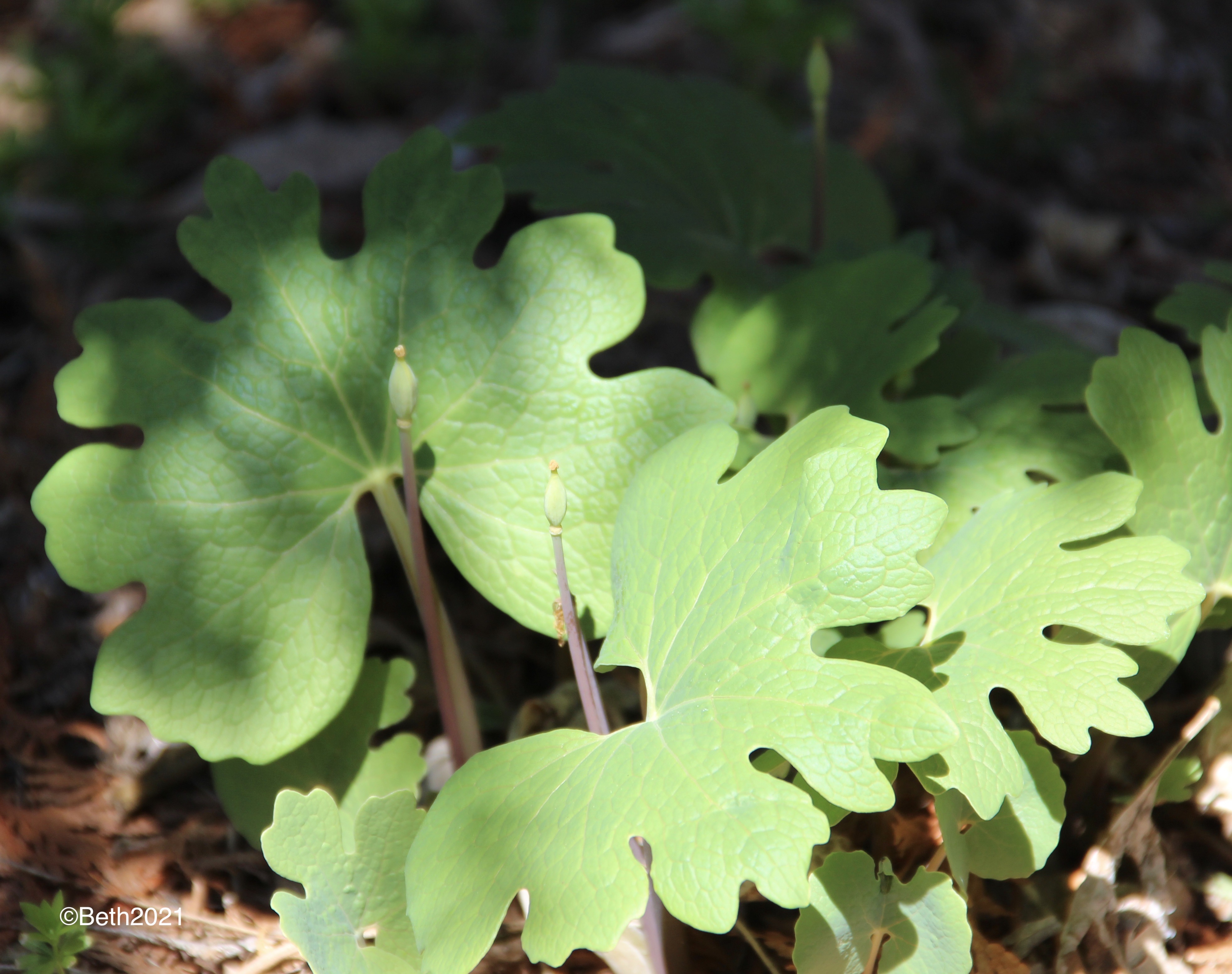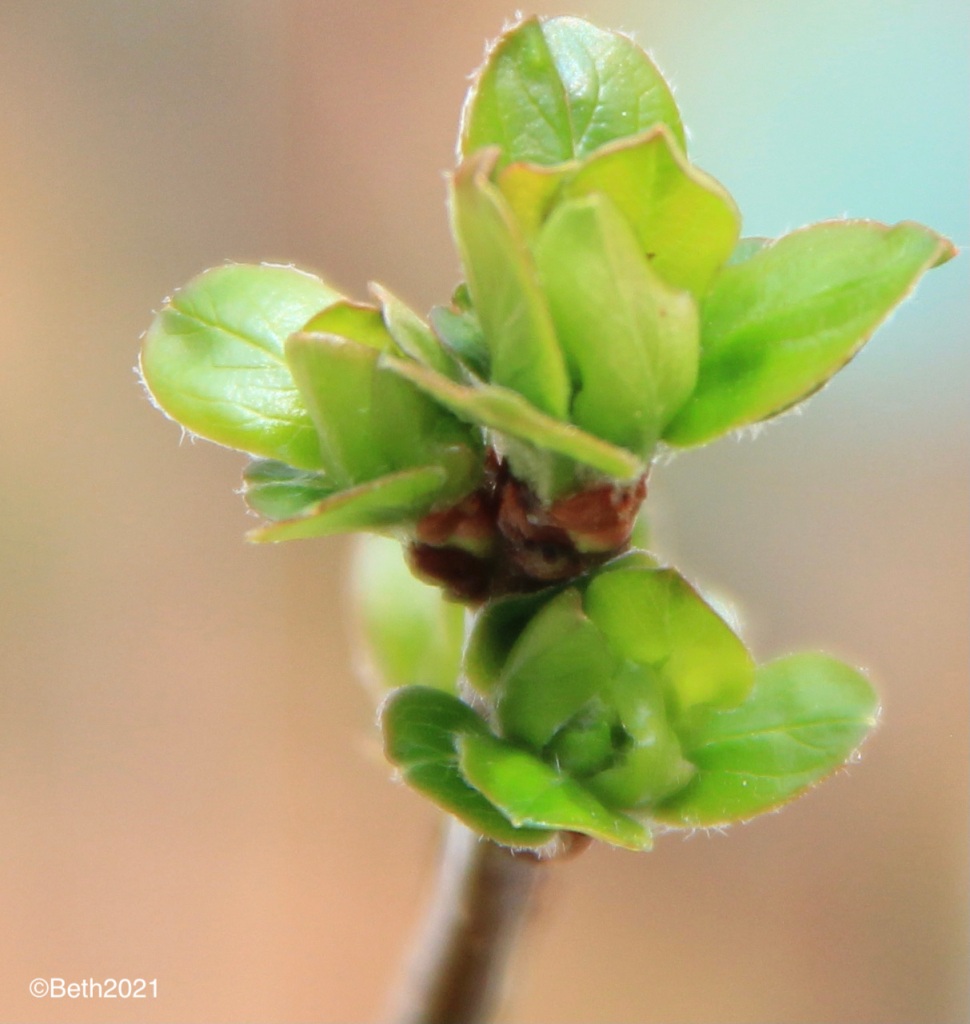As a youngster, I thought violets should be just one color: the shade of Crayola violet in my crayon box. In fact, violet flowers aren’t always violet! Many are blue, shades of purple, white and even yellow. The native common violet, or wooly blue violet, grows in almost every Minnesota county and in most of the eastern United States and Canada. It’s what many of us picture when we think “violet” (excluding African violets, which are a different plant family altogether).

The common violet or wooly violet (Viola sororia) blooms from April to June in the eastern United States and Canada.
Violets are a sure sign of spring in Minnesota and bloom from April to June. You’ll often find them in woodlands, thickets, gardens, lawns, along roadsides and even growing in sidewalk cracks. Individual species of violets can be tricky to identify and botanists disagree on how to classify them. Many of the backyard and roadside violets are common violets (Viola sororia), which may be blue, purple or white. The downy yellow violet (Viola pubescens) is also common in most Minnesota counties. It differs from many violets in that the flower stem arises from the leaf axil instead of growing separately from the corm.

The white form of the common violet clearly shows the pollinator “honey guides” on the bottom petal.

This violet came from my mom’s garden. I’d never seen violets this shade and loved them.

The downy yellow violet’s (Viola pubescens) stems and undersides of leaves are covered in soft, downy hair.
A typical native violet has heart-shaped or circular leaves with rounded teeth. In most species, the flower stem grows directly from the corm, which is similar to a bulb. Each leafless stem holds a single five-petaled flower. The purple-veined area on the lower petal is a nectar guide for pollinators. Bees see ultraviolet light and scientists think that the enhanced pattern visible to their eyes helps lead them to the nectar. In early May, typical pollinators are mason bees, tiny sweat bees and skipper butterflies. But, because the early spring weather can be cold and pollinators may be inactive, violets produce a second type of flower called a cleistogamous flower that doesn’t open. It self-pollinates and forms a seed capsule that ripens, bursts and ejects small brown seeds away from the plant. These flowers don’t form until after the trees leaf out. Look for them underneath violet plants later in the summer.
The violet plant is an important host for the caterpillars of many species of fritillary butterflies. Just as monarch larvae feed solely on milkweed plants, most fritillary caterpillars feed only on violets. Humans can eat violet blossoms, but not the rest of the plant, which is toxic. The blossoms provide vitamins A and C. In earlier times, they were used to make a simple, sweet jelly that’s also beautiful. To learn how to make violet jelly, and about other ways the flowers were used, visit PBS Wisconsin’s “The Wisconsin Gardener” for a brief, interesting interview.

Many fritillary caterpillars feed only on violets. This adult great-spangled fritillary (Speyeria cybele) nectars on pink bergamot.
Violets sometimes form patches, especially in a garden or lawn. They are a good ground cover in shady places where grass does’t grow well. If you have too many growing for your liking, they are easy to remove. Just make sure that you pull out the entire root — and please consider leaving a few for early pollinators and for fritillary caterpillars to eat!



































